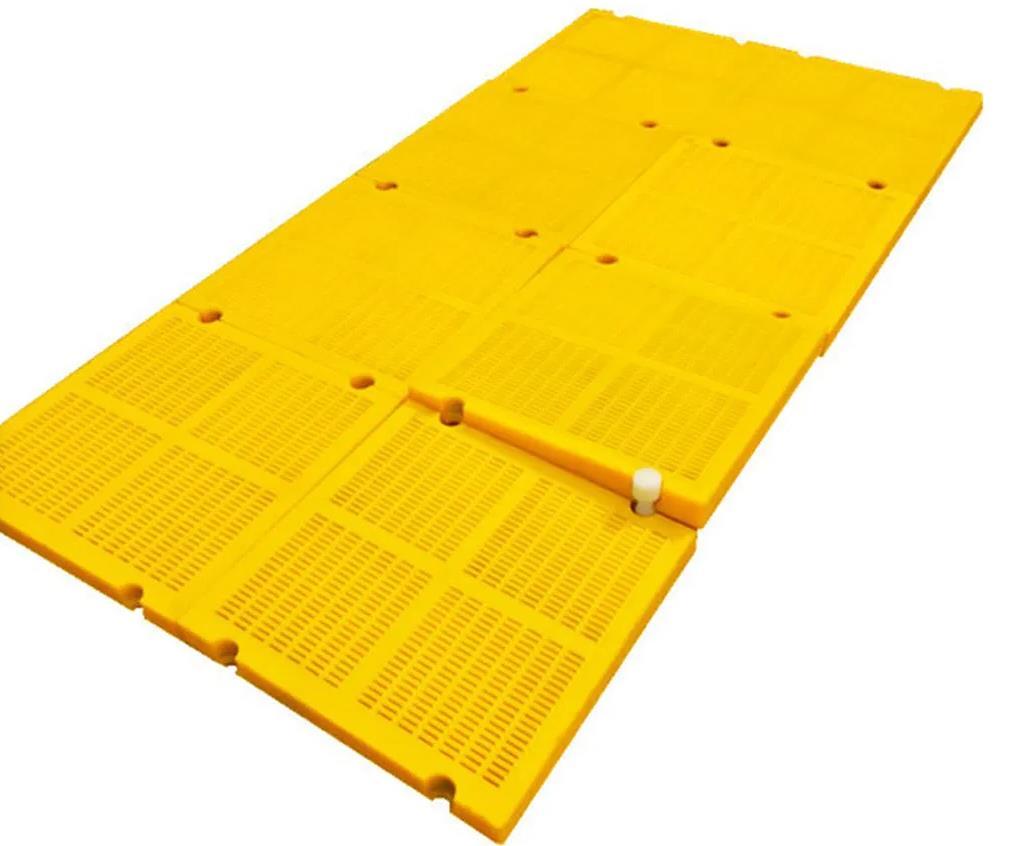How to Choose the Right Polyurethane Vibrating Screen Plate for Your Screening Applications
Selecting the right Polyurethane Vibrating Screen Plate is essential for industries such as mining, aggregate, and recycling, where durability and screening efficiency are crucial
Selecting the right Polyurethane Vibrating Screen Plate is essential for industries such as mining, aggregate, and recycling, where durability and screening efficiency are crucial. Here are the key factors to consider when choosing a polyurethane screen plate that best meets your needs:

1. Material Quality and Durability
Polyurethane is known for its abrasion resistance, flexibility, and long lifespan. High-quality polyurethane plates provide superior wear resistance, making them ideal for handling abrasive materials. Choosing a plate with a strong polyurethane composition ensures it can withstand high-impact and heavy-duty applications without frequent replacements, reducing maintenance costs.
2. Aperture Size and Shape
The size and shape of the apertures (or holes) are critical in achieving precise particle separation. Finer apertures work well for small particles, while larger apertures are suited for coarse materials. Additionally, the shape—whether square, slotted, or circular—affects material flow and screening performance. Select an aperture design that matches the material size and type being screened for optimal efficiency.
3. Plate Thickness and Flexibility
Polyurethane screen plates come in different thicknesses to accommodate various applications. Thicker plates provide additional strength and impact resistance, while thinner plates are more flexible and suitable for less abrasive materials. Ensuring the right balance between thickness and flexibility can prevent clogging and blinding, especially when screening wet or sticky materials.
4. Compatibility with Screening Equipment
It's crucial to choose a polyurethane screen plate that fits your existing vibrating screen equipment. Verify the plate's size and attachment design to ensure easy installation and compatibility. Customizable polyurethane screen plates can also be tailored to fit unique equipment requirements, minimizing installation time and improving overall performance.
5. Maintenance Needs
Consider the ease of cleaning and maintenance. Polyurethane’s non-stick surface helps reduce clogging, but plates with modular designs can be even easier to replace or clean. A screen plate with low maintenance requirements helps lower downtime and keeps operations running smoothly.
In conclusion, choosing the right polyurethane vibrating screen plate involves evaluating material quality, aperture design, thickness, compatibility, and maintenance needs. Selecting a plate tailored to your specific application not only boosts screening efficiency but also maximizes equipment lifespan and reduces overall costs.



